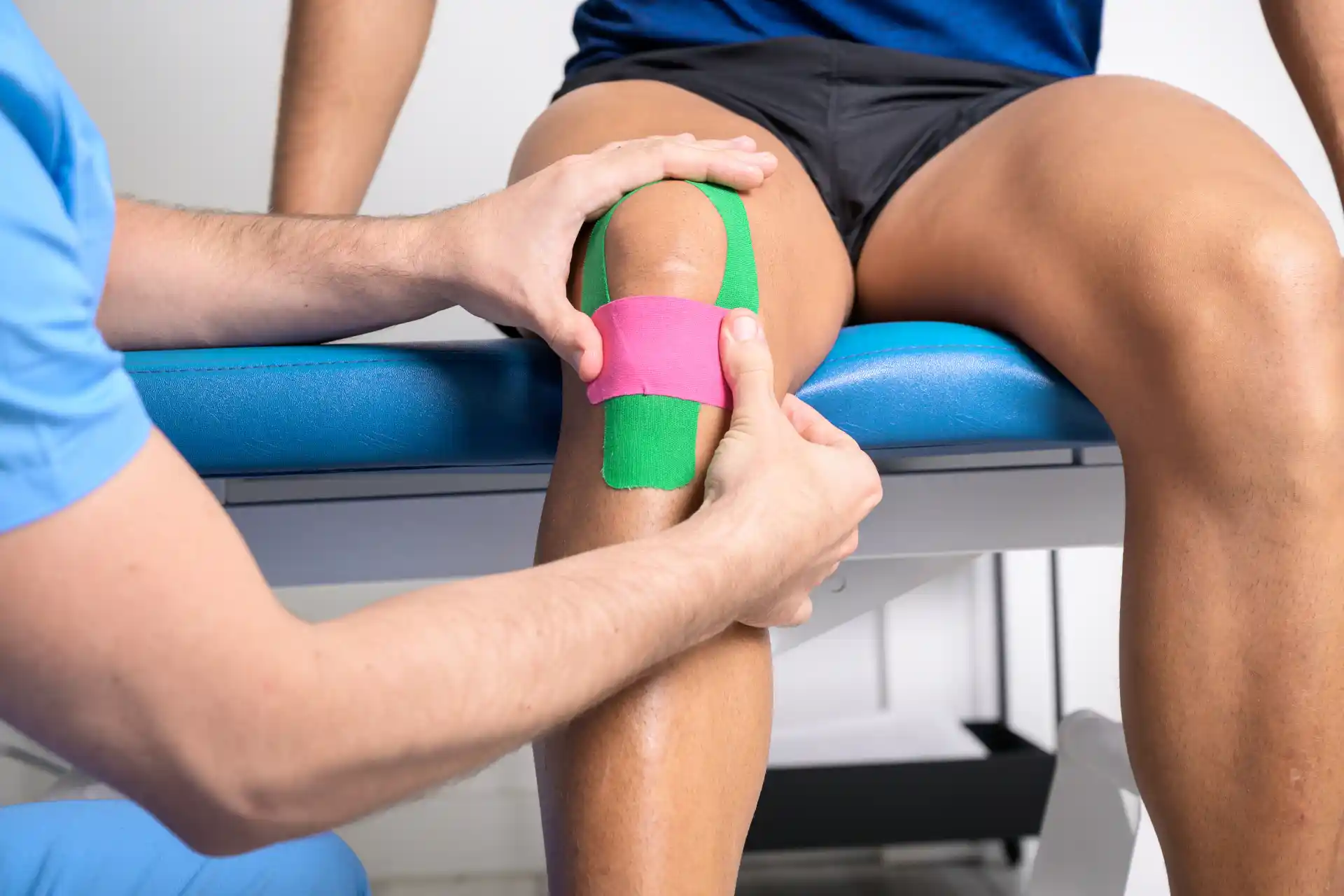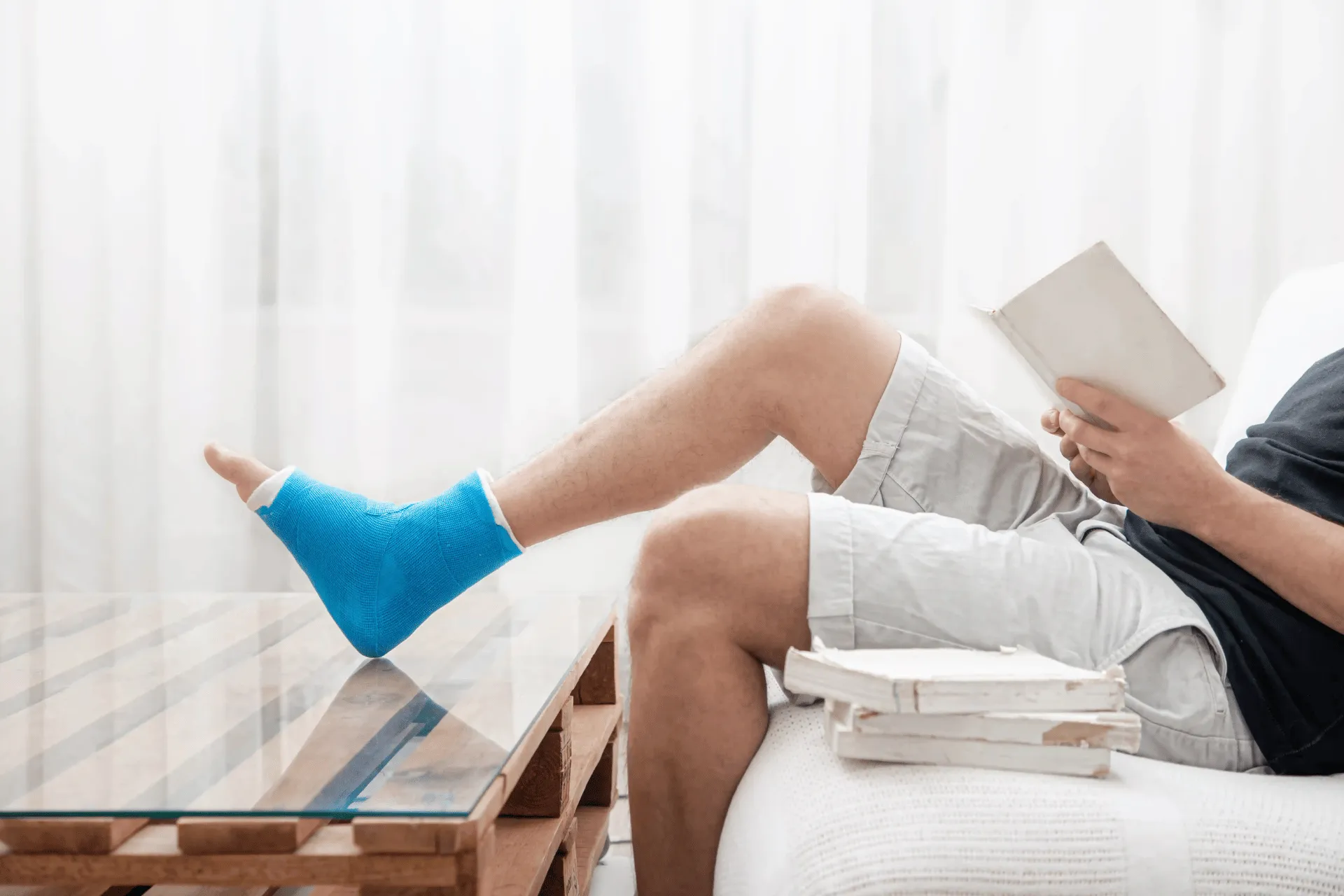Understanding Knee Pain
When dealing with knee pain, understanding the different types of knee conditions can help you identify the root cause and pursue the appropriate treatment.
Symptoms of Knee Pain
Knee pain symptoms can vary depending on the cause. Recognizing these symptoms can help you determine the severity of your condition and when to seek medical advice.
- Pain and Tenderness: You may experience pain, especially during movement, and tenderness around the knee joint.
- Swelling: Inflammation and swelling are common, particularly if the knee is injured or arthritic.
- Stiffness: Difficulty in fully extending or bending your knee can indicate stiffness, often associated with conditions like arthritis.
- Instability: A feeling of weakness or instability in the knee, which could lead to it giving out during activities. This is common in cases of ACL injuries or meniscus tears.
- Popping or Clicking Sounds: Noises such as popping or clicking when moving the knee can point to underlying issues such as cartilage damage or irregular kneecap tracking.
- Limited Range of Motion: Difficulty in moving the knee through its full range of motion can result from inflammation or structural damage.
If you experience any of these symptoms of knee pain, you may want to explore treatment options or consult with a healthcare provider for a proper diagnosis.
For more information on specific types of knee pain, check out guides on sharp knee pain, back of knee pain, and inner knee pain.
Causes of Tendon Pain Behind Knee
Some common conditions that can cause knee discomfort behind the knee, as well as on the front and side include:
Patellar Tendinitis
Tendon pain behind the knee is often associated with patellar tendinitis and can be particularly bothersome.
This condition usually arises from overuse or repeated stress on the tendons, leading to inflammation and pain.
Athletes involved in activities that require frequent jumping or abrupt changes in direction are at higher risk (Cleveland Clinic).
Common Symptoms:
- Pain and stiffness behind the knee
- Swelling and tenderness
- Difficulty bending or straightening the knee
Physical therapy exercises, including eccentric strengthening, can effectively treat many chronic tendon conditions behind the knee (Mayo Clinic).
For tips on exercises and treatments, refer to knee strengthening exercises and stretches for knee pain for more detailed insights.
Overuse Injuries
Overuse injuries occur when repetitive action places strain on the knee joints, leading to damage over time. Common overuse injuries include runner's knee and patellar tendinopathy (Medical News Today).
Runner's knee, also known as patellofemoral pain syndrome, involves cartilage wear behind the knee, causing dull, aching pain and joint stiffness. This condition is prevalent among athletes and can worsen with continuous stress.
Symptoms of Runner's Knee:
- Aching pain around the kneecap
- Swelling and stiffness
- Pain during physical activity
Patellar tendinopathy, often referred to as jumper's knee, is a condition that causes pain in the patellar tendon, which connects the kneecap to the shinbone.
Symptoms of Patellar Tendinopathy :
- Pain at the bottom of the kneecap
- Swelling around the patellar tendon
- Stiffness in the knee, especially in the morning
- Pain that worsens with physical activity
For more information on managing runner's knee, visit our dedicated articles on runners knee and patellar tendinopathy.
Arthritis
Arthritis is a common cause of knee pain, especially in older adults. Osteoarthritis and rheumatoid arthritis are the two most prevalent types affecting the knee.
Osteoarthritis occurs due to cartilage wear and tear, while rheumatoid arthritis is an autoimmune condition causing joint inflammation.
Symptoms of Knee Arthritis:
- Persistent pain and stiffness
- Swelling and redness
- Reduced range of motion
Arthritis can be managed through a combination of lifestyle changes and medical treatments.
For detailed treatment options without surgery, check out our guide on knee arthritis treatment without surgery.
Understanding these knee conditions and their symptoms can help you seek appropriate treatment and relief. If you experience any discomfort, consider consulting a healthcare professional for a proper diagnosis and personalized treatment plan. Remember, early intervention is key to preventing further damage and maintaining knee health.
For tips on exercises and techniques to alleviate knee pain, visit our sections on
For more information on addressing various knee conditions, such as bursitis knee, ACL tear, hamstring tendinopathy, osteoarthritis, and Achilles tendinopathy please refer to our comprehensive guides.
Treatment Approaches for Knee Pain
Addressing knee pain, particularly tendon pain behind the knee, involves a multifaceted approach. This section covers various treatment methods to help alleviate discomfort and promote recovery.
These treatment options should be treated as a general guideline, always consult with a healthcare professional for personalized guidance on medication and treatment that is right for you.
Rest and Recovery
Rest and recovery are essential components of any treatment plan for knee pain. Avoiding activities that exacerbate the pain and taking breaks to allow the knee to heal can significantly reduce symptoms.
Incorporating rest periods into your daily routine helps in preventing further strain on the knee and aids in faster recovery.
Key Points:
- Avoid high-impact activities like running.
- Practice low-impact exercises such as swimming or cycling.
- Incorporate rest periods throughout the day.
Physical Therapy and Exercises
Physical therapy plays a crucial role in the treatment of knee pain. Eccentric strengthening exercises are particularly effective for chronic tendon conditions behind the knee.
Research suggests that physical therapy may be more beneficial in reducing knee pain than home exercises, so consider consulting a professional therapist (Healthline).
Common Physical Therapy Exercises:
- Eccentric Calf Raises: Strengthen the tendons and muscles around the knee.
- Hamstring Curls: Improve flexibility and strength in the back of the knee.
- Quad Strengthening: Exercises such as leg presses to stabilize and support the knee joint.
For specific exercises to strengthen your knee, visit our page on exercises for knee pain.
Medications and Injections
Medications and injections offer temporary relief from knee pain.
These medications are a general suggestion, always consult a healthcare professional for the proper pain reliever and dosages that is right for you.
Common Medications:
- NSAIDs (Ibuprofen, Naproxen): Reduce pain and inflammation.
- Acetaminophen: Alleviates pain without reducing inflammation.
NSAIDs can alleviate pain and reduce inflammation, though they may be less effective for tendinopathy as this condition may not involve significant inflammation.
Corticosteroid injections can offer relief by reducing inflammation, but they are often reserved for severe cases and only for short-term use.
For a more detailed guide on medications, visit our article on what is the best painkiller for knee pain.
Seek RELIEF®
RELIEF® is a science-backed, targeted approach that targets dysfunctional fascia that surrounds the affected knee tendons.
The treatment utilizes hydrodissection—a fluid-based technique that gently separates and releases adhered soft tissue layers and fascia, which may contribute to knee pain and degenerative joint symptoms.1,2,3,4,5,6,7
RELIEF® is a minimally invasive alternative to traditional treatments—and requires no steroids, medication, surgery, anesthesia, or post-procedure immobilization.
For those experiencing severe and persistent knee pain, further consultation with a physical therapist is advisable to develop a personalized treatment plan.
These combined treatment approaches aim to relieve pain and foster recovery, enabling you to return to everyday activities without discomfort.
For further reading on knee care, explore our section on regenerative knee treatment and hydrodissection.
Preventing Knee Pain
Lifestyle Changes
Incorporating healthy lifestyle changes can significantly impact the health of your knees. Consider the following habits:
- Healthy Diet: Consume a balanced diet rich in nutrients to support joint health.
- Hydration: Stay adequately hydrated to maintain muscle function and reduce inflammation.
- Avoid Prolonged Sitting: Take breaks to stand and stretch to avoid muscle stiffness.
- Weight Management: Maintain a healthy weight to reduce stress on the knee joints.
These lifestyle adjustments can help prevent knee injuries and joint deterioration, ensuring the long-term health of your knees.
For more prevention tips, refer to our article on lifestyle changes to prevent knee pain.
Strengthening Exercises
Strengthening exercises play a crucial role in preventing knee pain, including tendon pain behind the knee.
Targeting specific muscle groups such as the quadriceps, hamstrings, and gluteal muscles can enhance knee stability and reduce the risk of injury.
Incorporate the following exercises into your routine:
- Squats: Strengthen the quadriceps and gluteal muscles.
- Leg Curls: Target the hamstrings.
- Side Leg Raises: Focus on the gluteal muscles.
- Single-leg lifts: Improve balance and core strength.
Maintaining muscle flexibility is equally important. Regular stretching of the hamstrings and quadriceps can prevent muscular imbalances that lead to knee pain.
Always consult with a healthcare professional before starting a new exercise regimen for your knee pain.
Proper Form and Techniques
Using proper form and techniques during physical activities can prevent knee injuries and reduce strain on tendons.
Pay attention to the following guidelines:
- Correct Posture: Maintain a neutral spine and keep your knees aligned with your toes.
- Warm-up: Always warm up before engaging in any physical activity to prepare your muscles.
- Avoid Overuse: Gradually increase the intensity and duration of your workouts.
- Proper Footwear: Use appropriate shoes that provide adequate support and cushioning.
Adopting these techniques can help prevent conditions like runners knee and patellar tendinopathy.
For additional information on managing and preventing knee pain, visit our articles on exercises for knee pain and stretches for knee pain.
Contact us today to schedule a consultation and learn more about how RELIEF® may help with your knee pain.






.svg)